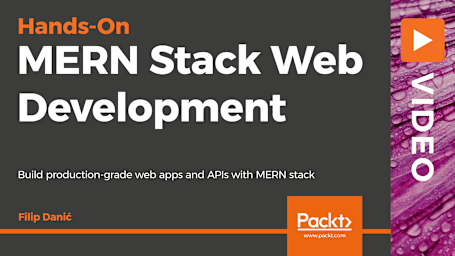
There's a growing demand for full-stack developers, but becoming one is not an easy task. A full-stack engineer is expected to have frontend and backend skills, as well as extensive knowledge of build tools and deployment workflow.
Building real-world projects and understanding the MERN stack is a great way to become a full-stack engineer. So, the journey starts by taking you through the MERN stack to explore Node. js and Express and set up the groundwork for the project. It's vital to store data safely hence we dive into the world of MongoDB and integrate it with our backend. Now, we build a client application that can consume API services. With React you'll be able to solve the two most daunting frontend problems and use JSON Web Tokens (JWTs) to integrate authentication and session management on both the client and the server. Finally, we review the skills that you've acquired throughout the course, look into the MERN boilerplate, and examine the application's architecture to build applications on it.
By the end of the course, you will not only have built a fully functional web application, but you'll also be well on your way to becoming a full-stack web developer. You'll be equipped with a deeper knowledge of the MERN stack, as well as general web development patterns and concepts.
Target Audience
JavaScript developers who want to learn the MERN stack and present themselves as full-stack developers on the job market. They will have knowledge of JavaScript programming and some experience with web development. Usually, these are developers who have mostly focused on the frontend and wish to learn more about the backend and database layer.







